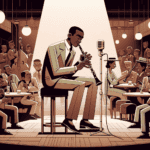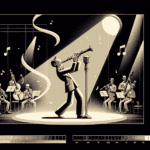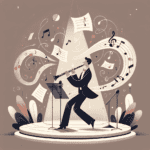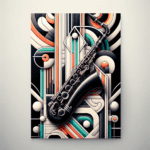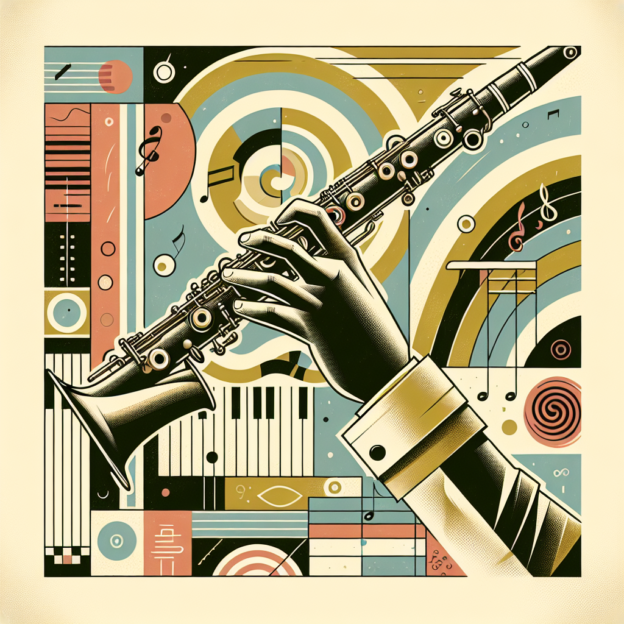The Clarinet in Jazz Album Cover Art: A Visual History
When you think of jazz, the first thing that probably comes to mind is the sound. But let's not forget about the visuals! The clarinet has played a key role in jazz, not just through the music but as a central element in jazz album cover art history. These albums are more than just collections of tracks; they are snapshots of an era, conveying the genre's spirit through vibrant graphics and delightful illustrations.
The blend of clarinet and visual art has been around since jazz's early days. From the 1920s, when jazz became a cultural sensation, record covers started to showcase the exciting lives and stories of the musicians behind the music. Clarinetists, known for their melodic voice and style, became stars in the art world, often gracing album covers alongside their instruments.
Evolution of Clarinet Representation in Album Art
| Era | Artistic Style | Clarinet Representation |
|---|---|---|
| 1920s-1940s | Realistic, Portrait-style | Musicians posed with instruments |
| 1950s | Bold colors, Graphic designs | Elegantly posed musicians, romanticized clarinet |
| 1960s-1970s | Abstract, Experimental | Psychedelic portrayals, symbolic representations |
| 1980s-Present | Digital, Minimalist, Eclectic | Blend of traditional and modern aesthetics |
Look at covers from the 1950s and you'll see artists like Benny Goodman and Artie Shaw often pictured in poised positions, adding to the clarinet's allure. Many of these covers showed off the instrument's elegance, with bold colors and designs that seemed to dance off the page. It's amazing how a simple image can bring to mind a world of sound and rhythm.
Moving into the 1960s and 70s, more abstract and experimental art took center stage. The clarinet was still front and center, but its portrayal changed dramatically. Have you seen the cover of Eric Dolphy's “Out There”? It's a vibrant, psychedelic image that captures jazz's free spirit during that time. Covers like these highlighted not just the music but also the broader cultural shifts that jazz musicians were part of.
Visual Expression in Jazz
Jazz album art gave musicians a canvas to express their personality and vibe visually. From the retro charm of Blue Note covers to the sleek minimalism of ECM, each album cover mirrors its music. For clarinetists, this meant their identity was tied not just to their sound but to the designs on their projects. The visual story added to their artistry, letting them make a statement — often capturing jazz's rhythm, pulse, and improvisational nature in pictures.
These days, album cover art has moved to digital formats. But the core idea remains. Music streaming services often showcase these artistic pieces, keeping the visuals relevant. Artists now use social media to promote their music with fresh takes on album art, mixing traditional designs with modern looks. The clarinet, a classic instrument, still has a place in these new setups.
Clarinet Craftsmanship and Visual Representation
Think about the craftsmanship involved. Musicians love high-quality instruments, and brands like Martin Freres show off the top-notch quality that helps create the powerful, rich sound jazz music needs. This aspect of the clarinet influences how artists want to be shown on their album covers because the sound their instrument makes is closely tied to their visual image.
What does this mean for up-and-coming clarinetists or jazz fans? It shows how important it is to pick your instrument carefully and know that your choices will shape not only your sound but also the visual stories you create as part of your artistic identity. Album covers celebrate the clarinet's impact on jazz history, showing the beautiful link between sound and image.
Conclusion
Looking at the clarinet's role in jazz album cover art gets to the heart of what jazz is all about: creativity, expression, and growth. Next time you flip through vinyl records or scroll through playlists online, take a second to enjoy the artwork — it's not just pictures; it's a vibrant connection to the music we love. Keep playing, creating, and nurturing that beautiful bond between jazz and art!


